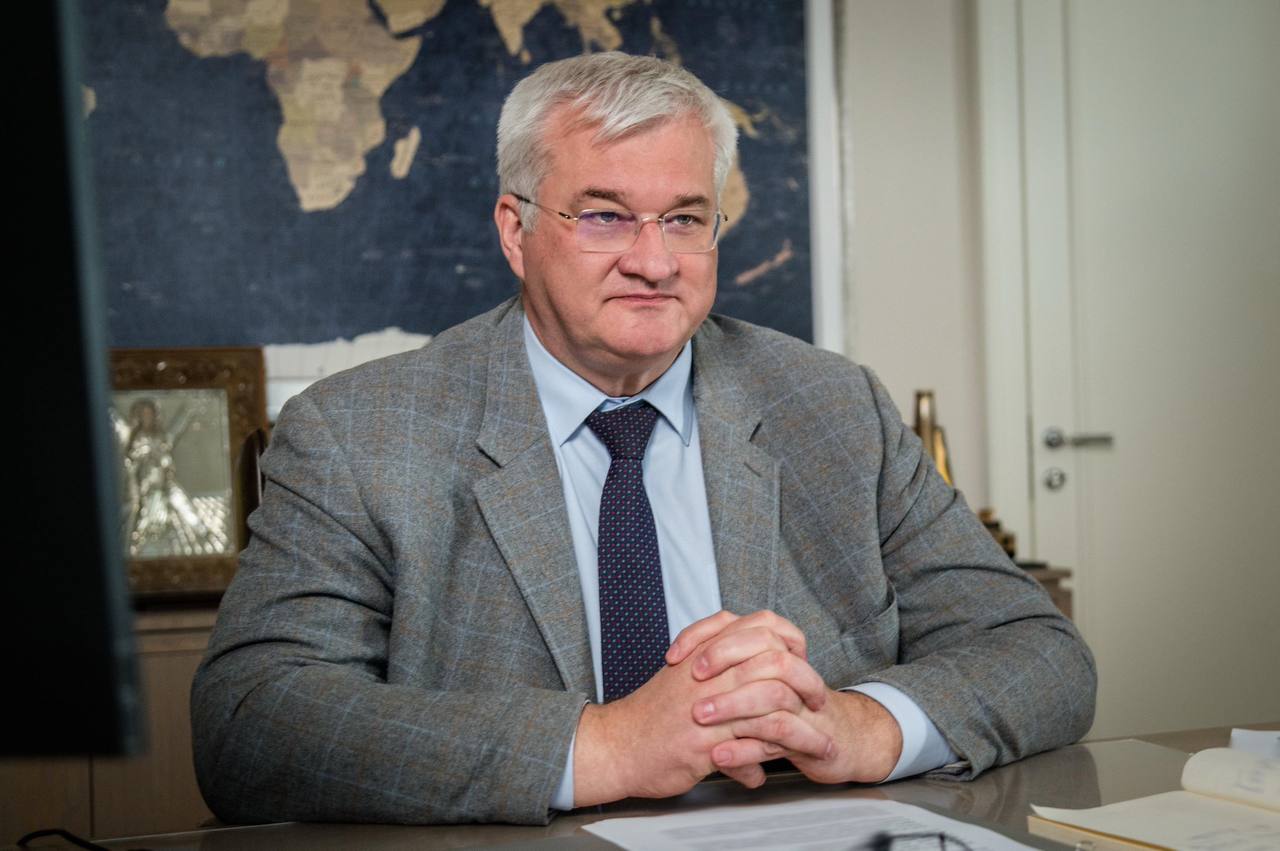In Trump’s Second Term, Far-Right Agenda Enters the Mainstream

© Mason Trinca for The New York Times


© Mason Trinca for The New York Times


© Eraldo Peres/Associated Press


© David Guttenfelder for The New York Times


© Saher Alghorra for The New York Times
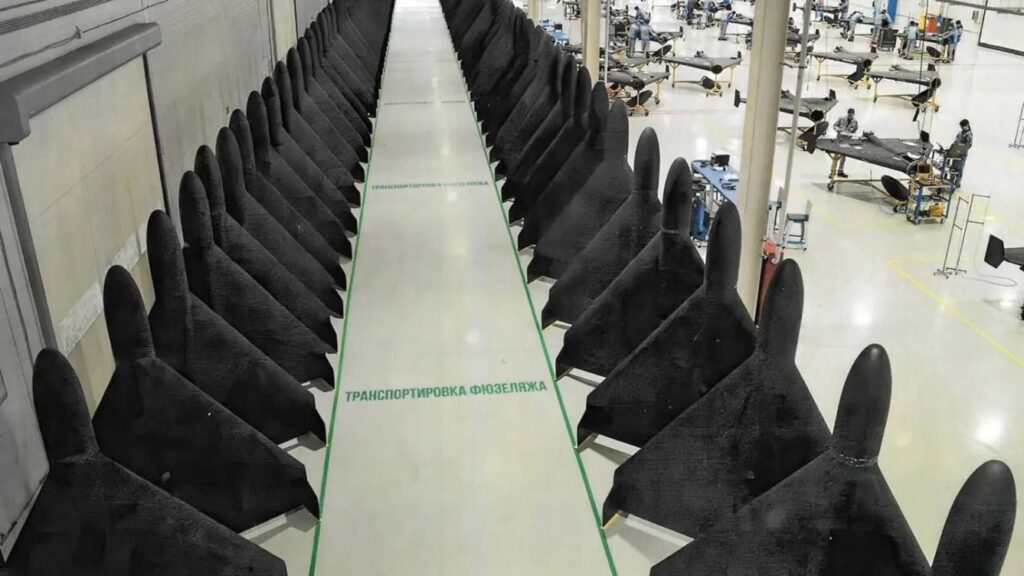

Ukraine’s Air Force said it intercepted 63 of 97 Russian drones overnight on 15 August. Russia also launched two Iskander-M missiles. Despite most drones being destroyed, the strikes killed and injured civilians in Kharkiv, Sumy, Donetsk, and Kherson oblasts, damaging homes, cars, farms, and infrastructure in at least 13 locations.
The Air Force reported that Shahed attack drones, decoy UAVs, and ballistic missiles were launched from five directions, targeting both frontline and rear settlements. Aircraft, electronic warfare units, and mobile fire groups were used to repel the assault, but local officials in four oblasts confirmed fresh deaths and injuries alongside severe property damage.
“Impacts from missiles and 34 UAVs were recorded at 13 locations,” the Air Force reported.
Kharkiv Oblast head Oleh Synehubov said Russian forces attacked five settlements in the last 24 hours, killing four people and injuring two.
Russian attacks killed a 64-year-old man in Kozacha Lopan. In Nechvolodivka, Russian forces killed a 69-year-old man and a 69-year-old woman and injured a 76-year-old woman. In Nova Kozacha, Russian strikes killed a 38-year-old man and injured another 38-year-old man. The attacks damaged detached houses in Kozacha Lopan and Nova Kozacha, two houses and a car in Nechvolodivka, and a garage, two cars, a tractor, and a vegetable storage building in Borova. Russian forces used guided aerial bombs, a Molniya drone, FPV drones, and other UAVs.
The Sumy Oblast Military Administration reported 100 strikes on 46 settlements in 16 communities between the morning of 14 August and the morning of 15 August.
In Miropilska community, a 32-year-old man was injured by an FPV drone. In Sumska community, a gas station was hit by a Russian UAV, burning a civilian vehicle and injuring its driver, who suffered burns. Damage was reported to houses, apartment buildings, civilian cars, and non-residential buildings in Bilopilska, Velykopysarivska, Vorozhbianska, and Hlukhovska communities. Russian forces used guided bombs, multiple rocket launchers, FPV drones, and other UAVs. Eleven people were evacuated from border areas during the day.
Donetsk Oblast head Vadym Filashkin said Russian shelling on 14 August killed two civilians — one in Kostyantynivka and one in Virivka — and injured seven others across the oblast.
The Kherson Oblast Military Administration’s morning report, covering 06:00 on 14 August to 06:00 on 15 August, said Russian artillery and drone attacks on more than 40 settlements killed one person and injured five others, including a child. Damage included apartment buildings, 22 detached houses, gas pipelines, outbuildings, and a private car.
This morning, around 08:00 on 15 August, Russian artillery hit central Kherson, injuring a 52-year-old man. Another update said a 40-year-old Kherson resident was injured in the same shelling, suffering blast injuries and a concussion. Also around 08:00, a drone struck a home in Kherson, injuring a 45-year-old woman with a concussion and head injuries.
Additional information emerged about earlier shelling in Shliakhove, Beryslav community, which killed two men aged 86 and 56 several days before. Later still, three medical workers — two women aged 47 and a 28-year-old man — sought treatment for blast injuries and concussions sustained in a previous day’s Russian shelling of Kherson.


© Luis Antonio Rojas for The New York Times


© Dado Galdieri for The New York Times


The Russians may be preparing a new assault on Kherson. The occupiers may be attempting to isolate the Kherson neighborhood of Korabel by striking a key bridge and organizing a foothold for a possible landing operation, CNN reports.
On 2 August, Russians launched a powerful strike on a strategically important bridge connecting the island district of Korabel to the main part of Kherson city. The strike also damaged three private homes and an apartment building. The invaders had previously targeted the bridge, forcing about 1,800 residents to leave their homes.
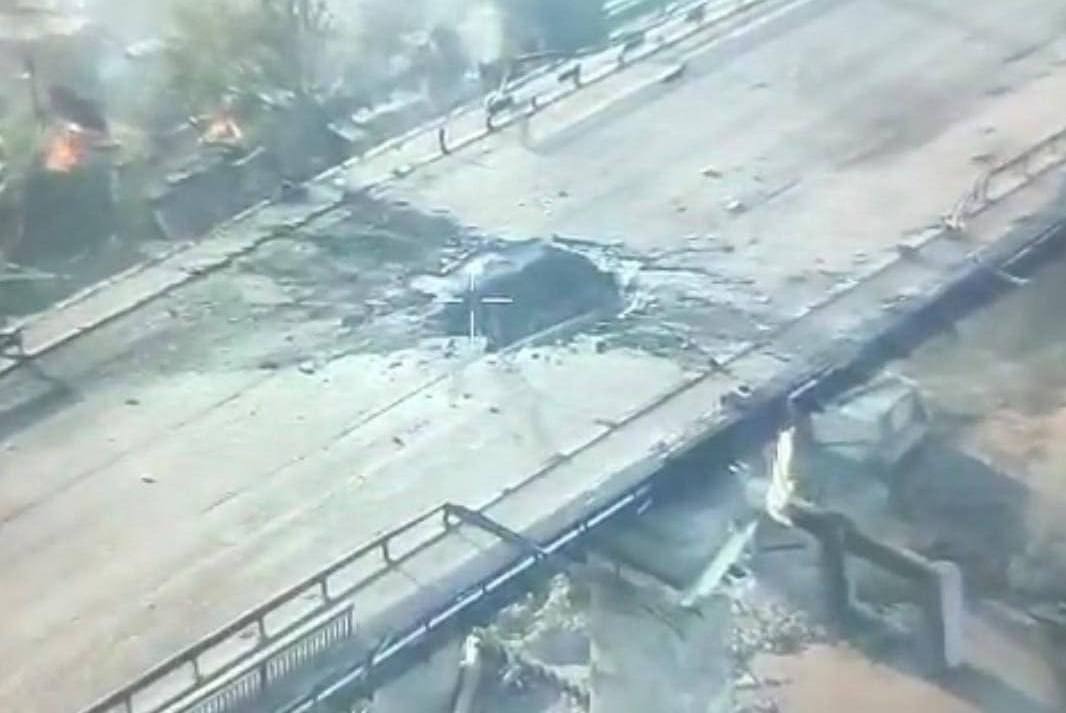
However, Oleksandr Prokudin, head of the Kherson Regional Military Administration, noted that some families return almost immediately after evacuation. But the authorities once again urge Korabel residents to relocate to safer areas.
The strategy reportedly is to target the bridge and land forces to recapture the city. Meanwhile, Vladyslav Voloshyn, the Southern Defense Forces spokesperson, says that the possibility of this scenario is low, RBC-Ukraine reports.
He explains that in this case, the Russians would have to cross several water channels and islands where Ukrainian forces actively destroy any assault groups.
“To reach our shore, the Russians need time. And we use that time to detect and destroy them while they’re still approaching,” he emphasizes.
Regarding a possible air assault, Voloshyn stressed that “enemy helicopters will be immediately detected and destroyed,” recalling the Russians’ failure at Hostomel in 2022. Then, the Russian assault troops failed to land at the airfield, which broke all their operational strategy in Kyiv Oblast.
The situation on the southern front remains tense. In one day, Russians carried out 280 attacks using kamikaze drones, nine airstrikes with guided bombs on Kherson, and employed drone munitions such as “Molniya,” “Lancet,” and “Privit-82.”
Russian drones constantly operate over Kherson, shelling continues, and battles are ongoing on islands in the Dnipro delta, specifically on Bilohorodivskyi and Velykyi Vilkhovyi islands. Active fighting is also reported near the Antonivski bridges.
Civilians continue to suffer. The central hospital in Kherson is treating 25 wounded. CNN shares the story of 62-year-old Oleh, who was injured while running to help neighbors after a drone strike.
“It’s dangerous there, you have to listen carefully. A double tap. That’s how they operate. They destroy a house, it burns. A minute later, another one comes, checking whether the house is burning or someone is trying to extinguish it. And then they kill and destroy further,” he says.
Before the war, Kherson Oblast was an important tourist and agricultural region of Ukraine. In 2021, the region welcomed 4.8 million tourists. Its coastline stretched for over 200 kilometers, featuring sandy beaches and a well-developed resort infrastructure.
Along the shore, there were numerous guesthouses, children’s camps, and sanatoriums offering therapeutic treatments based on thermal springs, salt, and mud.


© Victor Moriyama for The New York Times
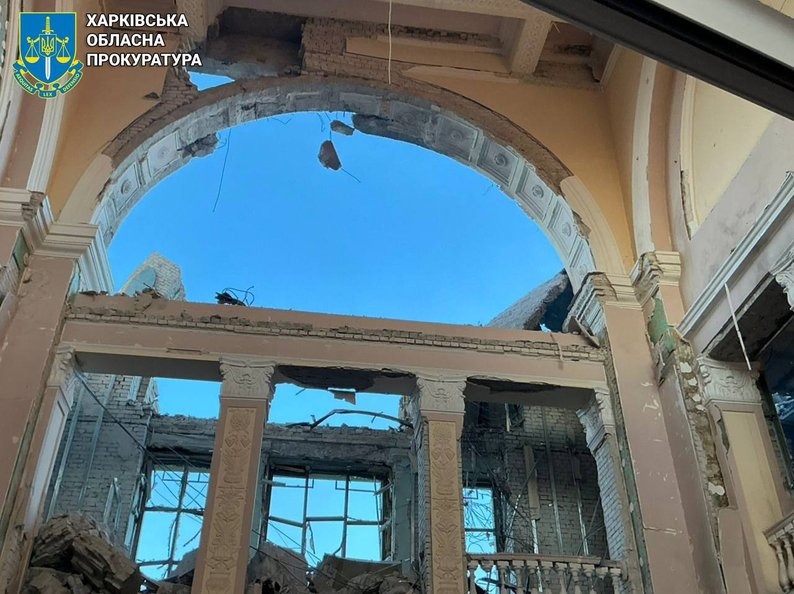

Russia’s Lozova drone strike killed a railway worker and injured civilians, including two teenagers, during Russia’s heaviest drone and missile attack on the city since the start of the full-scale war. According to the Ukrainian Air Force and local officials, the assault overnight on 5 August 2025 involved 46 Shahed-type and decoy UAVs, and a ballistic Iskander-M missile.
The Ukrainian Air Force reported that from 19:00 on 4 August, Russia launched an air attack from the directions of Kursk, Bryansk, Oryol, and Primorsko-Akhtarsk in Russia, using Shahed drones, UAV decoys of various types, and an Iskander-M missile from Bryansk Oblast.
Ukraine’s air defenses, including aviation, anti-aircraft missile units, electronic warfare, and mobile fire groups, intercepted or suppressed 29 drones by 08:00.
“Hits from 17 drones were recorded in the eastern direction, as well as one ballistic missile, and debris from downed drones fell in three locations in the southern and northeastern directions,” the Air Force wrote.
In Lozova, Kharkiv Oblast, a massive drone strike killed one person and injured others, local authorities reported. The mayor of Lozova, Serhii Zelenskyy, said that critical infrastructure, high-rise buildings, detached houses, and an educational institution were damaged. He noted that emergency services, medics, and rescue workers were operating on site and that restoration of water supply was underway.
Zelenskyy added that parts of the city remained without power, including Avylivka and the Katerynivskyi district. Public transport routes were also affected.
Images released by the Kharkiv Oblast Prosecutor’s Office show damage at the Lozova railway station, including a collapsed roof. The station was temporarily closed, and changes were introduced to suburban train services, the city council and Ukrzaliznytsia reported.
Trains Nos. 66/65 and 166/165 on the Uman–Cherkasy–Kharkiv route were redirected via an alternate path. Passengers to and from Lozova were being transported by bus to the Paniutyne station. Ukrzaliznytsia warned of delays of up to one hour due to use of a reserve locomotive.
According to the State Emergency Service, six fires broke out in Lozova as a result of the drone strike. Destruction of other buildings was also recorded.
The Kharkiv Oblast Prosecutor’s Office clarified that Russia has used over 30 Shahed-type attack drones — for some reason, the Kharkiv local authorities and prosecutor’s office always refer to them as “Geran-2” by their Russian designation.
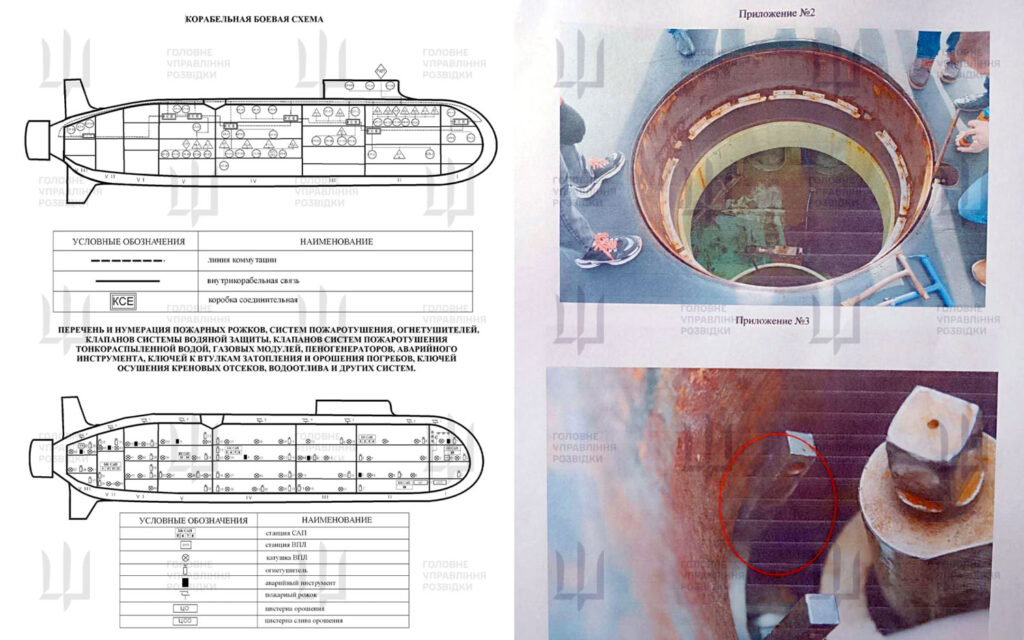

Ukraine’s defense intelligence says it has captured Russian nuclear submarine secrets after a major intelligence operation. The files reveal every detail of the Project 955A’s K-555 Knyaz Pozharsky, Russia’s newest Borei-A class nuclear submarine. Ukrainian officials say these documents expose the submarine’s inner workings and give a full view of its technical limitations.
This comes as the Russo-Ukrainian war continues. Ukrainian intelligence agencies operate actively inside Russia, hacking military systems, seizing and destroying logistics records, and, kinetically, striking military installations, defense plants, and fuel depots while targeting both military infrastructure and key figures in the Russian armed forces and military industry.
Knyaz Pozharsky is a Borei-class nuclear-powered ballistic missile submarine designed as part of Russia’s nuclear triad. It carries the RSM-56 Bulava submarine-launched ballistic missile system, a weapon deployed since 2019 and developed for the Russian Navy as a core element of the country’s nuclear deterrence structure.
Ukraine’s HUR defense intelligence agency reported that it obtained engineering documents and instructions for the nuclear submarine Knyaz Pozharsky, project 955A Borei-A. These documents include the ship’s combat layout, engineering schematics, survival systems, and the organizational structure of the crew. The files also detail procedures for damage control and towing, as well as how the crew handles cargo and casualties.
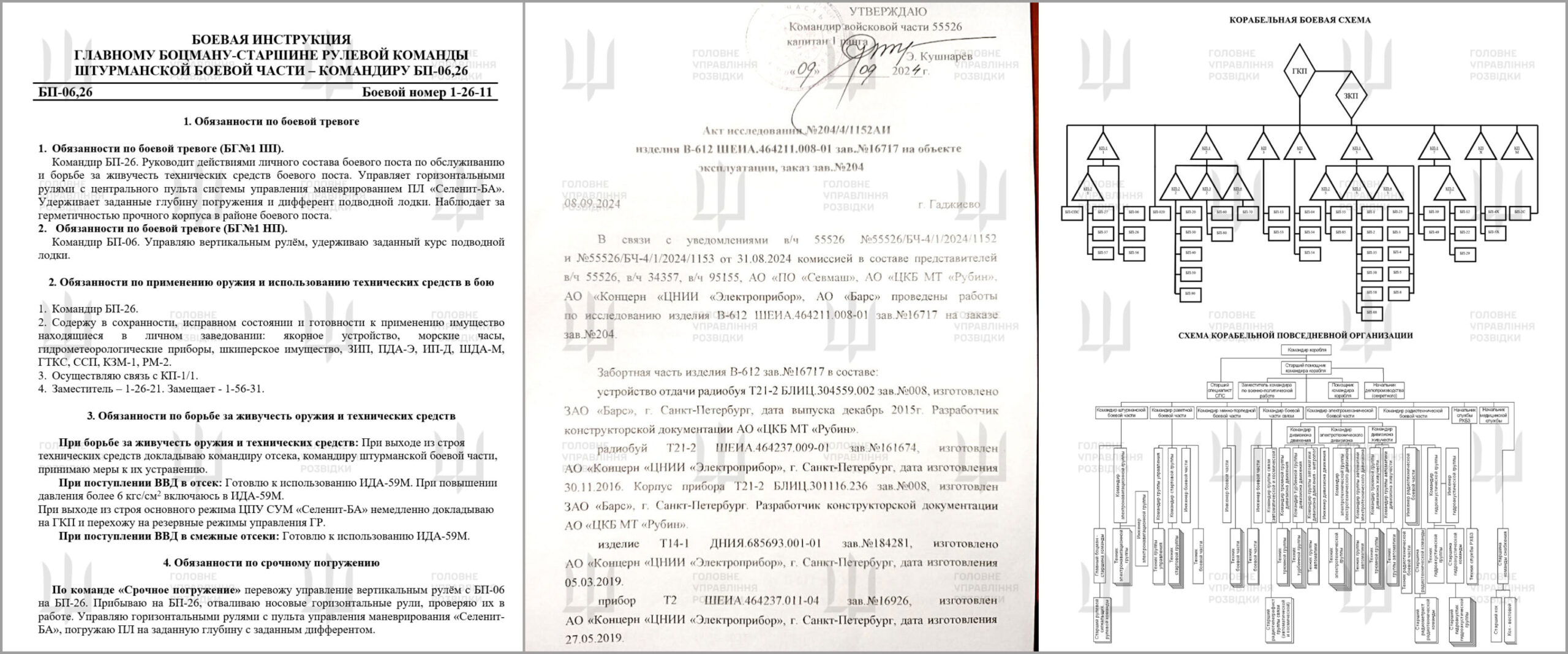
The documents include the names of every crew member, their roles, qualifications, and even their physical training levels. According to the intelligence agency, this trove also features combat instructions, orders posted in cabins and compartments, and a log regulating both daily routines and combat duties aboard the submarine.
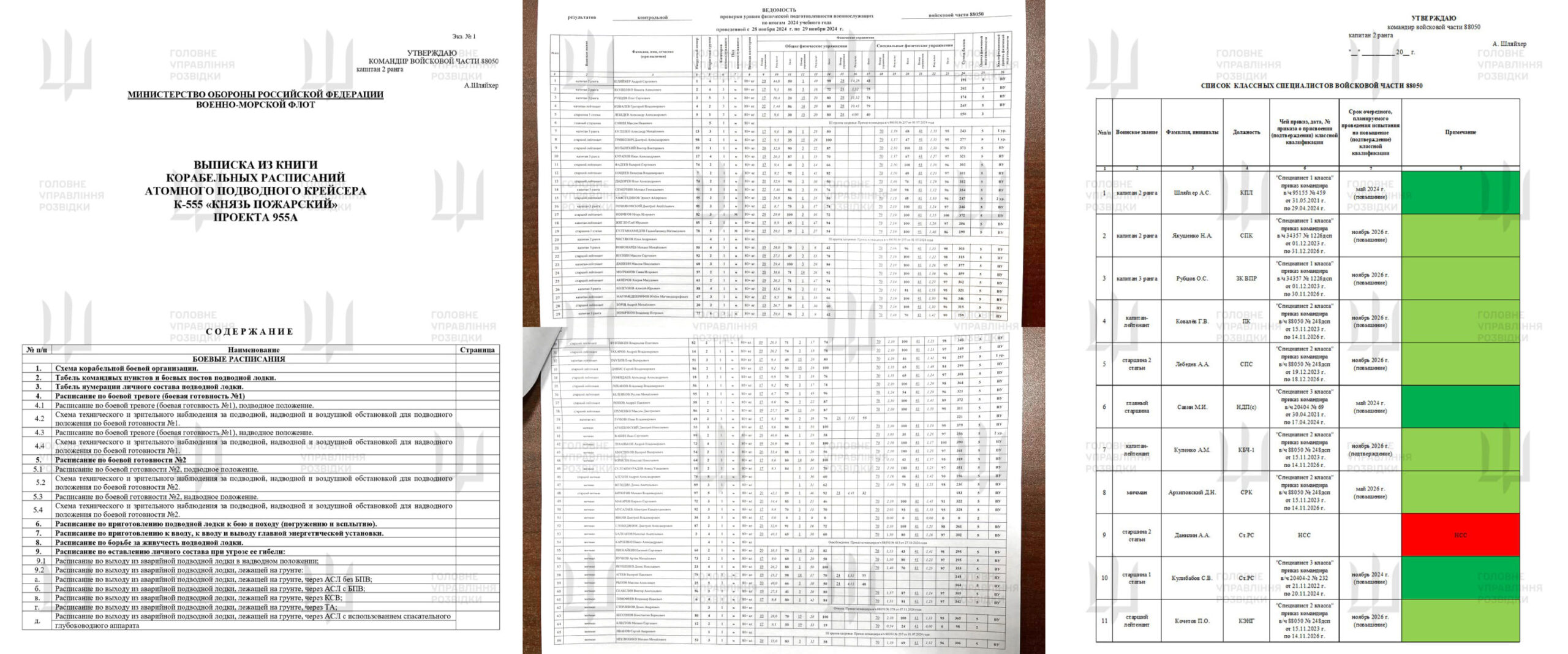
Ukraine’s defense intelligence says the obtained information highlights specific weaknesses in the Knyaz Pozharsky and other submarines of the 955A Borei-A class. These vessels carry 16 launch tubes for R-30 Bulava-30 intercontinental ballistic missiles. Each missile can carry up to 10 warheads, making the class a core part of Russia’s nuclear forces.
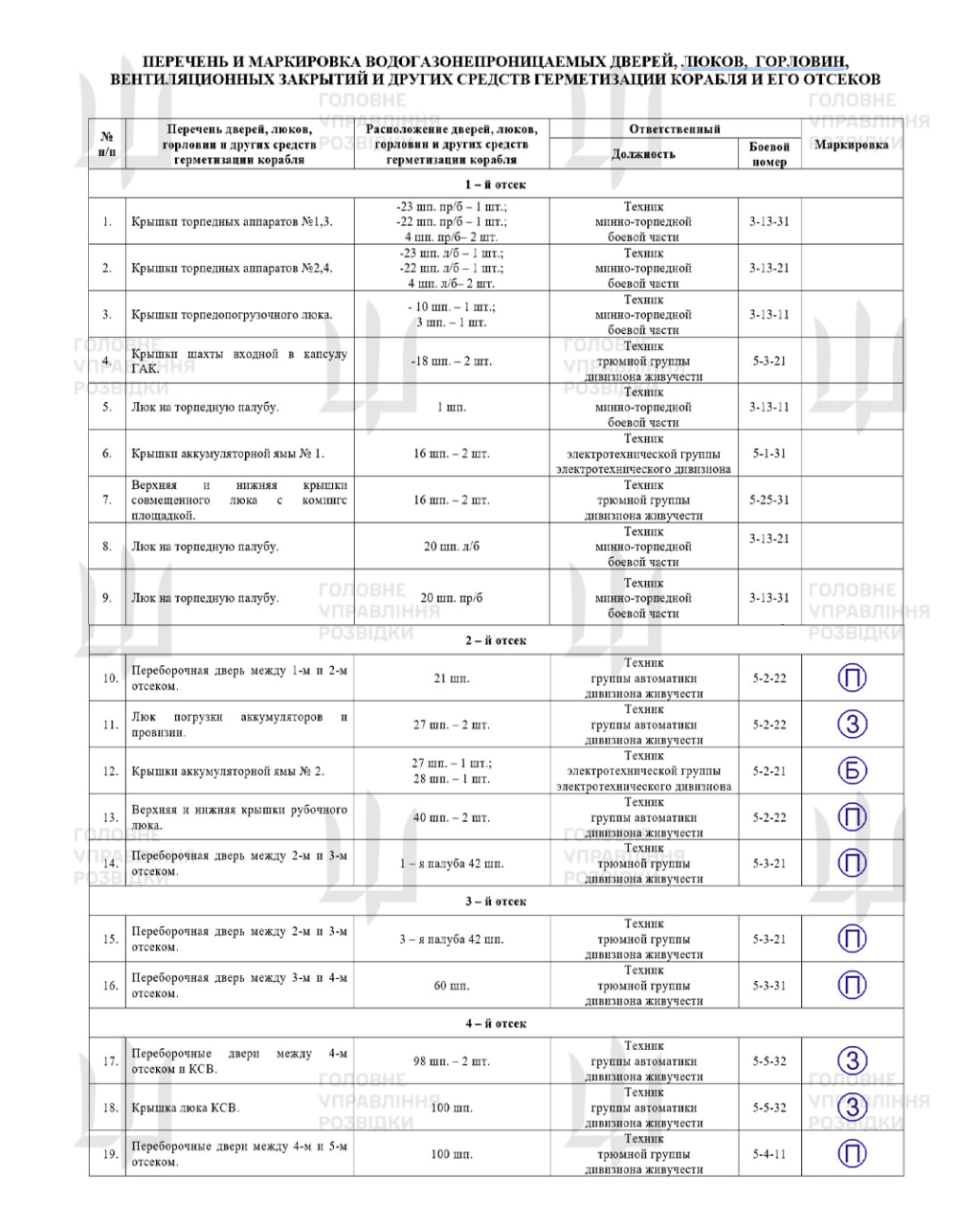
The Knyaz Pozharsky is assigned to the 31st submarine division of the Russian Northern Fleet, with its permanent base in the city of Gadzhiyevo in Murmansk Oblast.
On 24 July, the Kremlin said that Vladimir Putin attended the flag-raising ceremony for the Knyaz Pozharsky in Severodvinsk at the Sevmash shipyard in Arkhangelsk Oblast. At the ceremony, the submarine officially joined combat duty. The Knyaz Pozharsky became the 142nd nuclear-powered submarine built at this shipyard. Kremlin statements also claimed that six more submarines of the same class are planned by 2030.

Thanks to your incredible support, we’ve raised 70% of our funding goal to launch a platform connecting Ukraine’s defense tech with the world – David vs. Goliath defense blog. It will support Ukrainian engineers who are creating innovative battlefield solutions and we are inviting you to join us on the journey.
Our platform will showcase the Ukrainian defense tech underdogs who are Ukraine’s hope to win in the war against Russia, giving them the much-needed visibility to connect them with crucial expertise, funding, and international support.
We’re one final push away from making this platform a reality.


Ukraine's current ambassador to the United States, Oksana Markarova, will be replaced in the near future, Foreign Minister Andrii Sybiha confirmed in an interview with Ukrainian Radio on July 8.
Earlier on July 8, a source in the Presidential Office told the Kyiv Independent that President Volodymyr Zelensky had informed Markarova of her pending dismissal.
"We can expect about 20 decrees dismissing and appointing new heads of foreign institutions," Sybiha said, specifically mentioning the U.S. as one of the planned replacements.
In his comments, Sybiha described Markarova as "one of our most successful ambassadors."
"She is extremely effective and charismatic, but surely every diplomat has a rotation cycle," he said. "I can confirm that the Ukrainian president's vision is to carry out rotations in all countries, both G7 and G20. That is, first and foremost, to strengthen these countries, in particular the U.S. track."
Zelensky and Sybiha on June 21 announced plans to overhaul Ukraine's diplomatic corps, teasing major personnel changes in a bid to secure better military aid packages and other support from international partners.
Zelensky discussed replacing Markarova specifically in a recent phone call with U.S. President Donald Trump, a source in the President's Office told the Kyiv Independent on July 7.
There are multiple "strong candidates" in the running to replace Markarova, the source said. Prime Minister Denys Shmyhal, Deputy Prime Minister Olha Stefanishyna, Defense Minister Rustem Umerov, and Energy Minister Herman Halushchenko are among the candidates, Bloomberg previously reported.
In his evening address, Zelensky said that a meeting with all Ukrainian ambassadors is scheduled for July 21. It was not immediately clear as to when the changes to the posts may take effect.
Markarova has served as Kyiv's ambassador to Washington since April 2021, and played a central role in coordinating U.S. military and financial support during the early phases of Russia's full-scale invasion.
The announcement of her dismissal comes at a high-stakes moment in relations between Kyiv and Washington. The U.S. Defense Department recently paused shipments of critical weapons systems, including Patriot air defense missiles and precision-guided munitions, even as Ukraine faces intensifying Russian attacks.
 The Kyiv IndependentAnna Fratsyvir
The Kyiv IndependentAnna Fratsyvir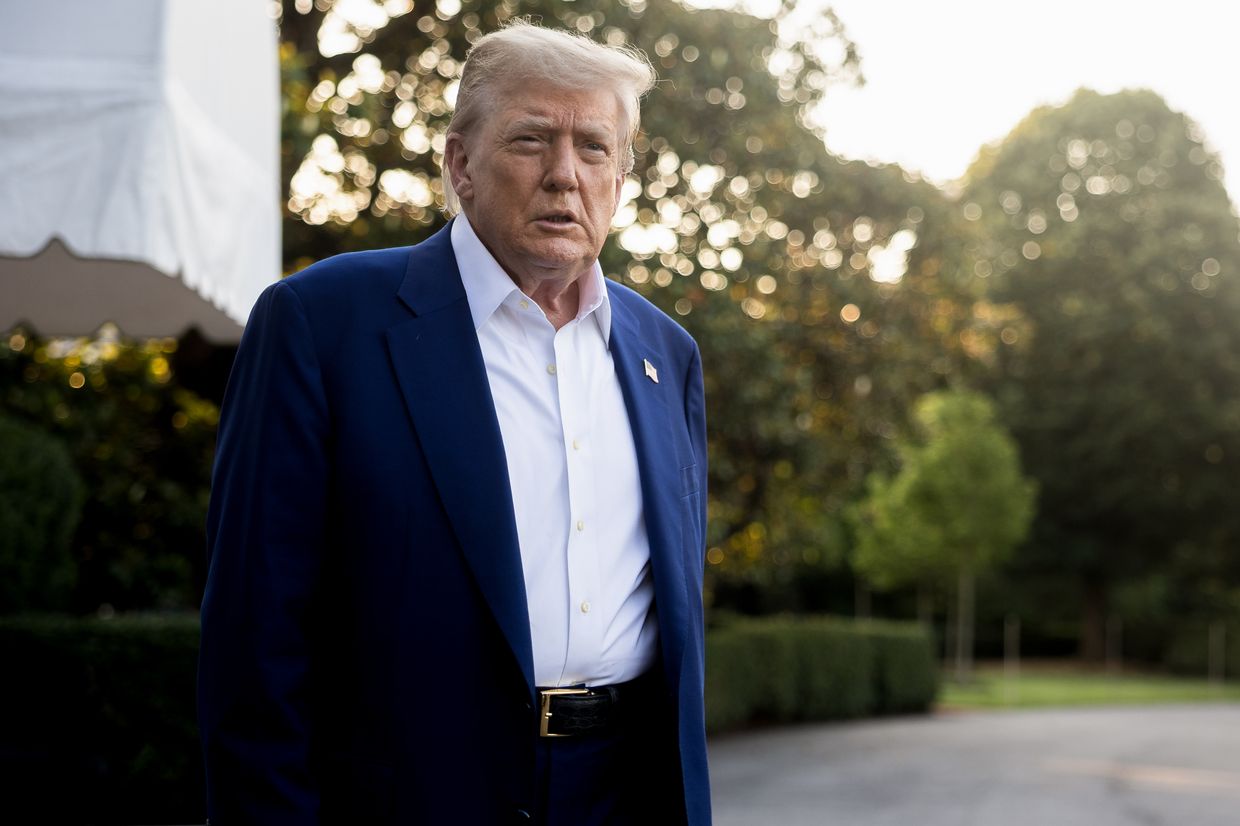
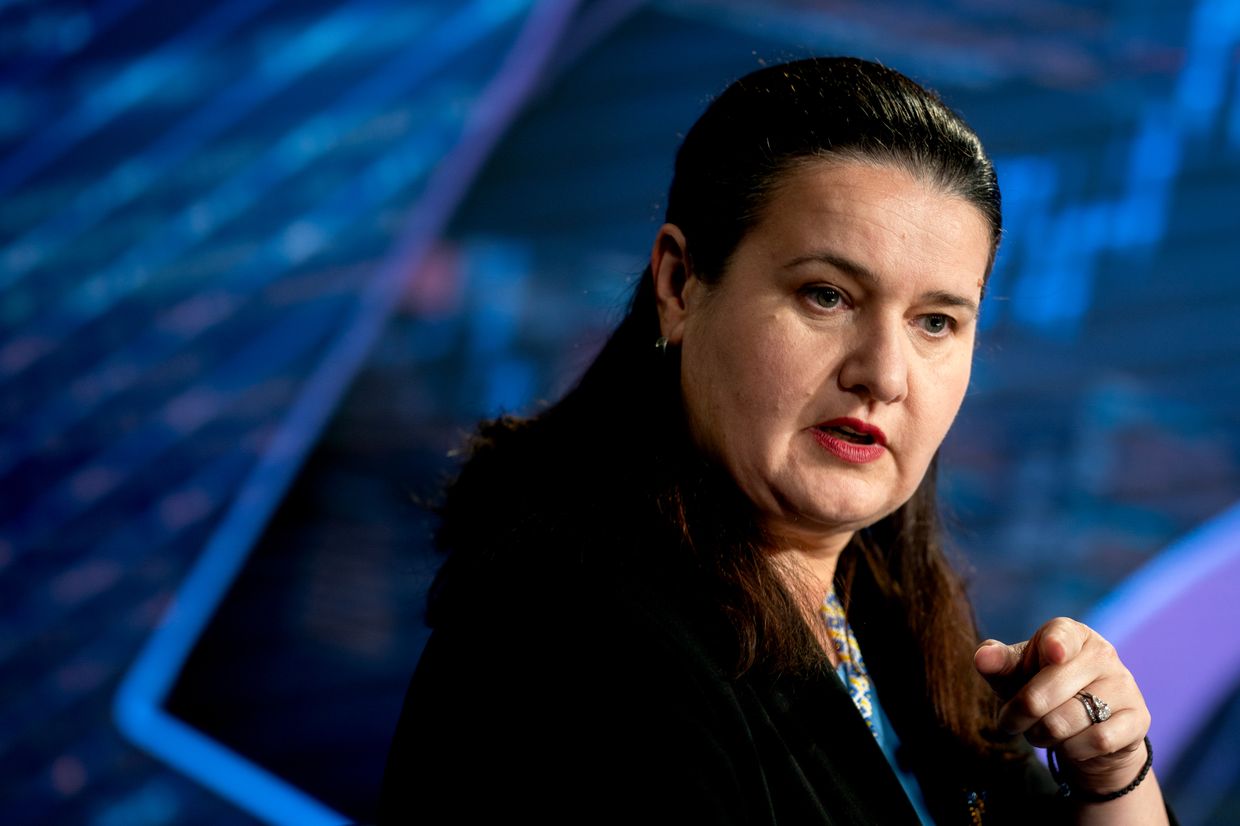

Editor's Note: Read the latest developments to this story.
Ukraine's ambassador to the U.S. has been informed by President Volodymyr Zelensky that she is to be dismissed, a source in the President's Office confirmed to the Kyiv Independent on July 8.
Oksana Markarova has held the post since April 2021, and played a central role in coordinating U.S. military and financial support during the early phases of Russia's full-scale invasion.
But her future in the role was thrown into doubt earlier this week when it was revealed that Zelensky and U.S. President Donald Trump discussed a potential change during a recent phone call, a source in the President's Office told the Kyiv Independent on July 7.
According to the source, the topic of replacing her was raised by Kyiv, suggesting the move could be "useful for both sides." The source added that there are multiple "strong candidates" in the running.
The source added that there are multiple "strong candidates" in the running.Prime Minister Denys Shmyhal, Deputy Prime Minister Olha Stefanishyna, Defense Minister Rustem Umerov, and Energy Minister Herman Halushchenko are among the candidates, Bloomberg previously reported.
The possible reshuffle comes at a moment of renewed tension between Kyiv and Washington. The U.S. Defense Department recently paused shipments of critical weapons systems, including Patriot missiles and precision-guided munitions, sparking concern in Kyiv.
The discussion about Ukraine's representation in Washington also coincides with longstanding speculation about a broader government reshuffle.
 The Kyiv IndependentLiliane Bivings
The Kyiv IndependentLiliane Bivings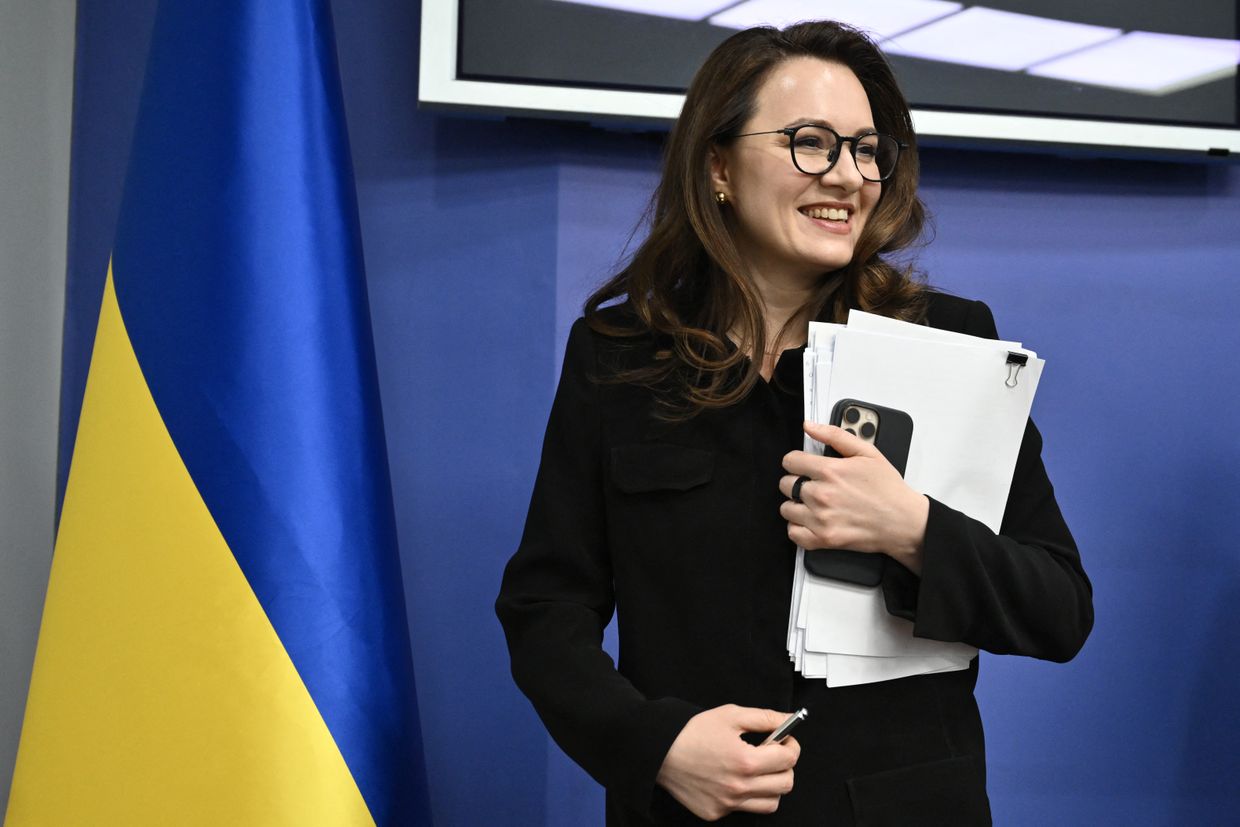
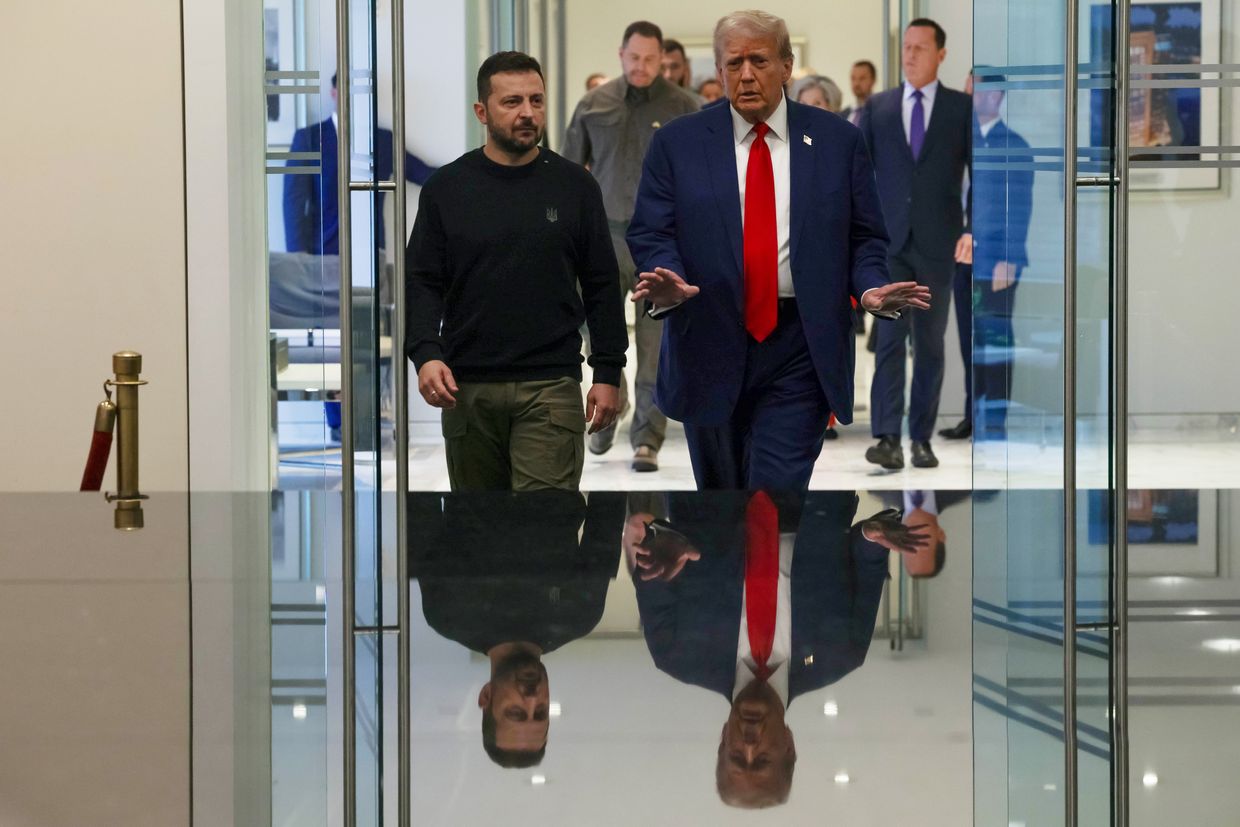

President Volodymyr Zelensky and U.S. President Donald Trump discussed a potential change in Ukraine's ambassador in Washington during a recent phone call, a source familiar with the conversation told the Kyiv Independent.
Oksana Markarova has held the post since April 2021, and played a central role in coordinating U.S. military and financial support during the early phases of Russia's full-scale invasion.
According to the source, the topic of replacing her was raised by Kyiv, suggesting the move could be "useful for both sides." The source added that there are multiple "strong candidates" in the running.
Prime Minister Denys Shmyhal, Deputy Prime Minister Olha Stefanishyna, Defense Minister Rustem Umerov, and Energy Minister Herman Halushchenko are among the candidates, Bloomberg reported.
When contacted by the Kyiv Independent, a spokesperson for Stefanishyna said they "do not comment on rumors."
The possible reshuffle comes at a moment of renewed tension between Kyiv and Washington. The U.S. Defense Department recently paused shipments of critical weapons systems, including Patriot missiles and precision-guided munitions, sparking concern in Kyiv.
The discussion about Ukraine's representation in Washington also coincides with longstanding speculation about a broader government reshuffle.
Rumors about replacing Shmyhal as prime minister have circulated since last summer. Although Zelensky replaced several officials in September 2024, Shmyhal remained in office.
Halushchenko, one of the potential ambassadorial candidates, has faced criticism in parliament. Lawmakers from the Energy Committee, led by lawmaker Inna Sovsun, introduced a motion to dismiss him in January, citing alleged corruption.
Shmyhal has served as Ukraine's Prime Minister since March 2020, overseeing national governance during a period marked by reforms and wartime crises. Before his premiership, he held key roles as Ivano-Frankivsk Oblast Governor and Vice Prime Minister.
Stefanishyna is a seasoned Ukrainian diplomat and expert in European integration who has held high-level government roles since 2020. In September 2024, she was appointed Deputy Prime Minister for European and Euro-Atlantic Integration, and Justice Minister.
Umerov is Ukraine's current Defence Minister, appointed in September 2023. He started his political career as a member of the Parliament for the opposition party Voice (Holos). Umerov played a major role in peace talks with Russia in the early phase of the full-scale war.
The ambassadorial review comes as Kyiv seeks to strengthen its diplomatic ties with Washington.
Zelensky described his July 5 phone call with Trump as "the best conversation in all this time." The U.S. president echoed the sentiment, calling the exchange "very strategic."
 The Kyiv IndependentTim Zadorozhnyy
The Kyiv IndependentTim Zadorozhnyy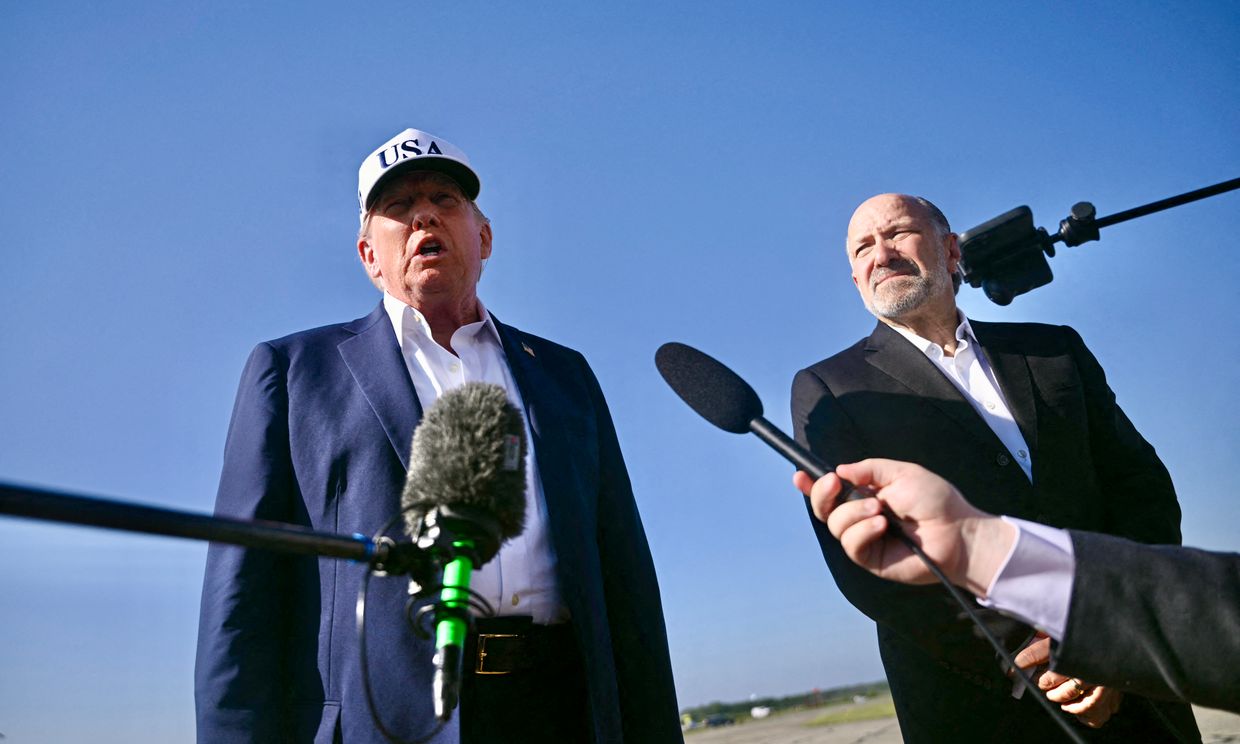
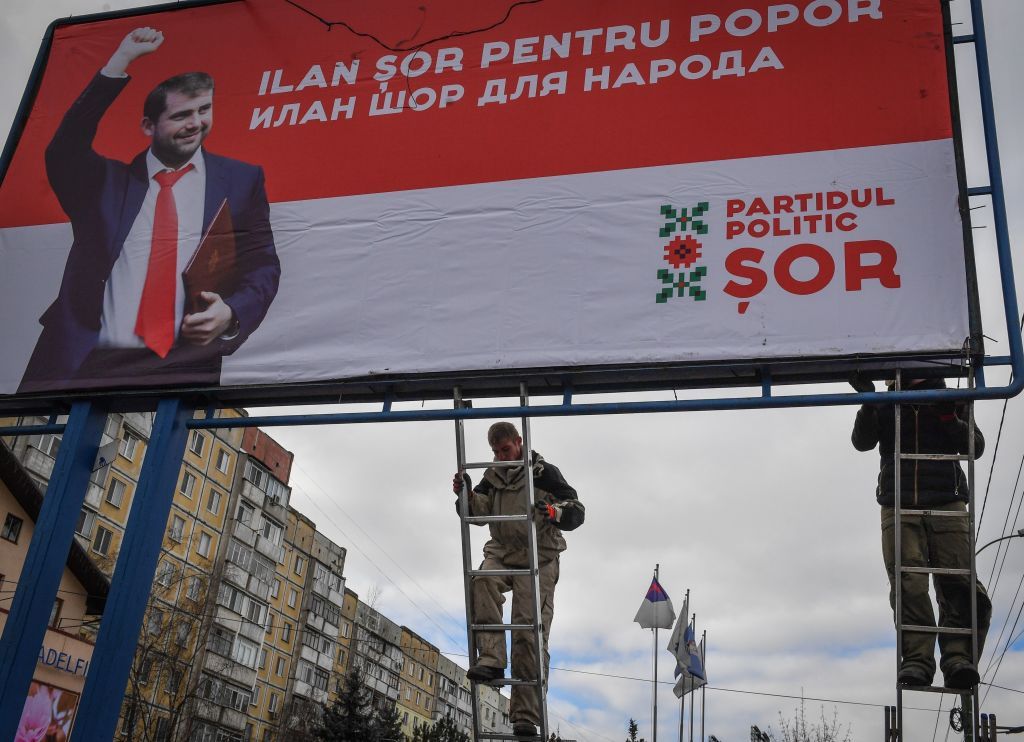

Moldova's Victory bloc, a pro-Russian political alliance, plans to participating in the country's September parliamentary elections, the bloc's founder Ilan Shor announced on July 6.
Shor, an exiled pro-Kremlin oligarch, established the Victory bloc in August 2024. The bloc includes his own Shor party, which is banned in Moldova.
Victory will submit documents in the coming days registering the bloc for participation in the September vote, Shor said.
"Our main goal in these elections is to overthrow the fascist regime and hold early democratic elections within the next six months," Shor said.
The candidate list will be headed by Evghenia Gutul, the head of Moldova's Gagauzia region, who is currently on trial for illegally funding the banned Shor party. Gutul maintains ties to Moscow and is currently under U.S. sanctions.
The upcoming September elections carry high stakes for Moldova, one of the pooerest countries in Europe. Moldovan President Maia Sandu said on July 4 that Chisinau's European path rests on the outcome of the vote.
European Commission President Ursula von der Leyen pledged on July 4 that the European Union will help Moldova defend itself against hybrid threats by "agents of autocracy" as elections approach.
Moldova was granted EU candidate status in 2022. Sandu's ruling Party of Action and Solidarity aims to maintain its parliamentary majority and move the country closer to full membership by 2030.
 The Kyiv IndependentThe Kyiv Independent news desk
The Kyiv IndependentThe Kyiv Independent news desk


European Commission President Ursula von der Leyen pledged on July 4 that the European Union will help Moldova defend itself against hybrid threats by "agents of autocracy."
"We are committed to protecting you against the hybrid attacks and the energy shocks that your country has been a victim of," von der Leyen said following the EU-Moldova summit in Chisinau.
"Who is behind those attacks is clear to all of us here. These are the same agents of autocracy trying to undermine our democracies everywhere in Europe."
Von der Leyen praised Moldova's support for Ukraine and the EU, noting its acceptance of hundreds of thousands of Ukrainian refugees and its assistance with European wildfire response efforts.
The visit was made in show of solidarity with Moldova, one of Europe's poorest countries, as it prepares for high-stakes parliamentary elections on Sept. 28.
The pro-European government of President Maia Sandu faces a challenge from the pro-Russian Socialist Party, amid growing fears of destabilization ahead of the vote.
Sandu has accused Russia of using its military presence in Moldova's Russian-occupied Transnistria region to stir unrest and derail the country's EU aspirations. On June 12, she warned that Moscow could provoke a crisis in Transnistria to influence the election outcome.
Transnistria has been under Russian-backed separatist control since the early 1990s, with approximately 1,000 to 1,500 Russian troops still stationed in the region.
On June 11, Transnistrian authorities declared a 30-day state of emergency after a sharp drop in natural gas supplies. The unrecognized region has faced mounting energy shortages since January, when Russian energy giant Gazprom halted deliveries in what many see as an attempt to destabilize the situation in Moldova.
Moldova was granted EU candidate status in 2022. Sandu's ruling Party of Action and Solidarity aims to maintain its parliamentary majority and move the country closer to full membership by 2030.
Moldovan Prime Minister Dorin Recean earlier told the Financial Times that Russia plans to send 10,000 troops to Transnistria and establish a pro-Kremlin government in Moldova.
 The Kyiv IndependentTim Zadorozhnyy
The Kyiv IndependentTim Zadorozhnyy
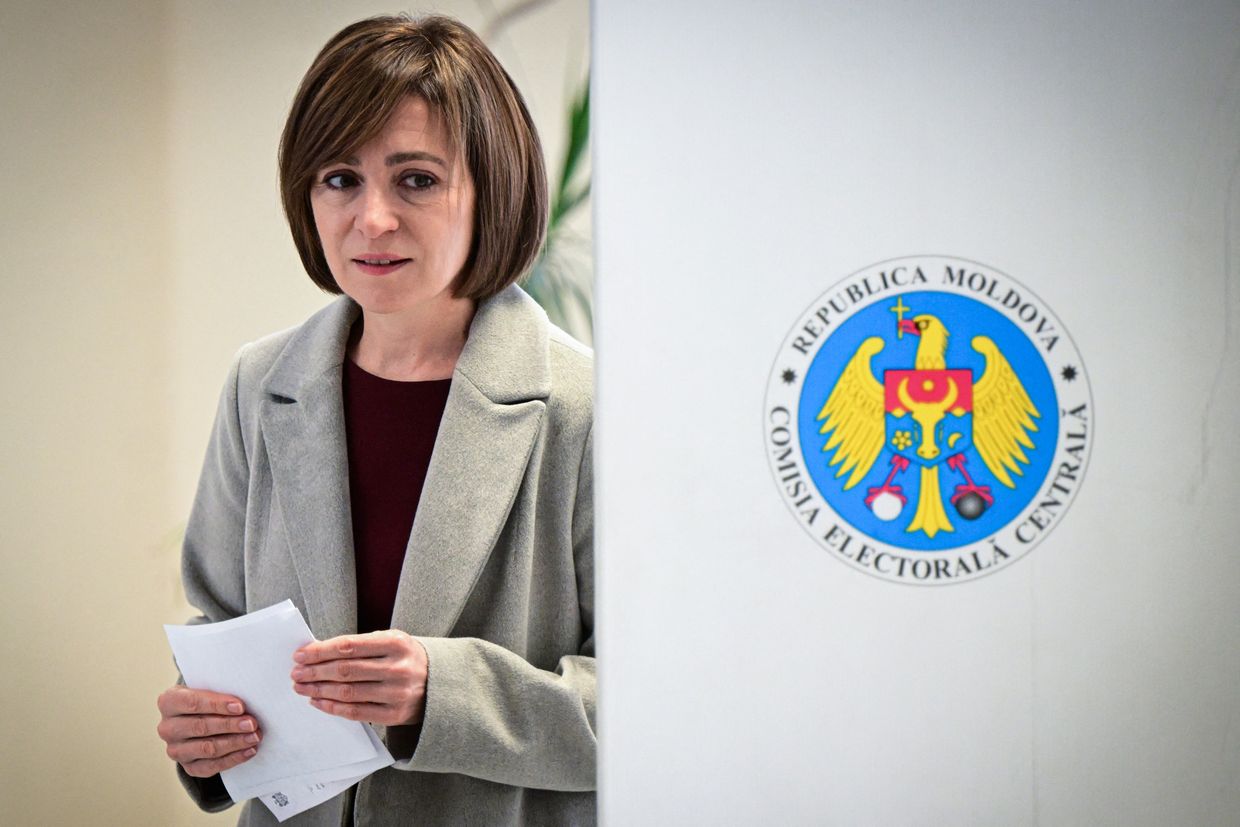

Moldovan President Maia Sandu said on July 4 that her country's European Union aspirations depend on Moldovan citizens as a crucial September 28 election approaches.
Sandu hopes her pro-European Party of Action and Solidarity (PAS) will retain its parliamentary majority, paving the way for Moldova, one of Europe's poorest nations, to join the EU by 2030.
Sandu made her remarks at the conclusion of the 27-nation bloc's inaugural summit with Moldova. Her PAS party faces a challenge from the pro-Russian Socialist Party and its allies in the upcoming election. Sandu secured re-election last year by a narrow margin against a Socialist challenger in the ex-Soviet state, located between Ukraine and Romania. A referendum seeking public backing for EU membership also just barely surpassed a 50% majority.
"Prosperity and peace do not occur for nothing, you have to build them. With collective effort and unity. When citizens are united and choose the correct path and proceed along it," Sandu told a news conference after the summit. "The European Union is already happening here. The only risk is if we stop. If we decide this autumn that nothing will stop us, then everything is possible."
Sandu and her party have condemned Russia's invasion of Ukraine and accuse Moscow of destabilizing Moldova. Russia, in turn, claims many Moldovans desire to maintain ties with Moscow and accuses Sandu of fostering Russophobia.
Opinion polls suggest that no single party will likely secure a parliamentary majority. If no majority emerges, pro-European parties would need to engage in coalition talks.
At the summit, which included European Commission President Ursula von der Leyen and European Council head Antonio Costa, the EU announced the disbursement of the first €270 million ($318 million) tranche of an Economic Growth Plan for Moldova.
 The Kyiv IndependentAnna Fratsyvir
The Kyiv IndependentAnna Fratsyvir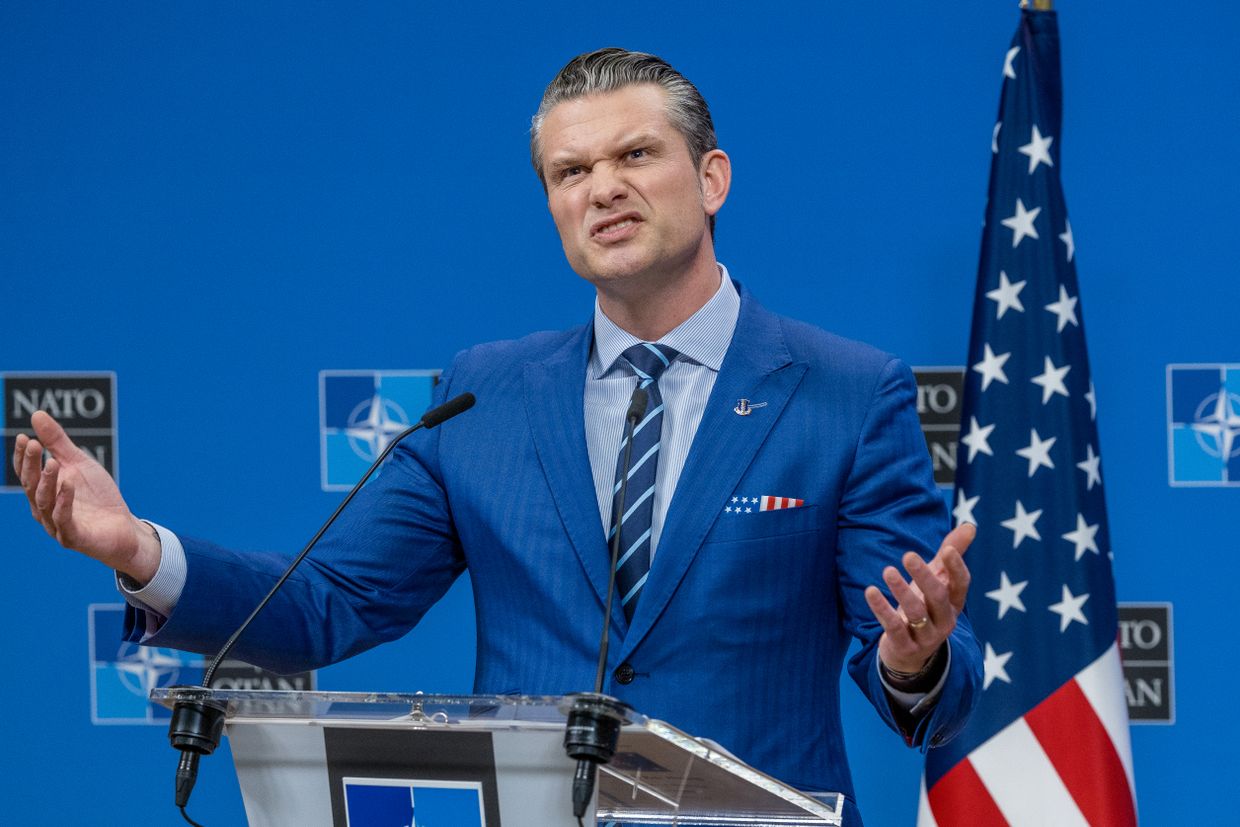
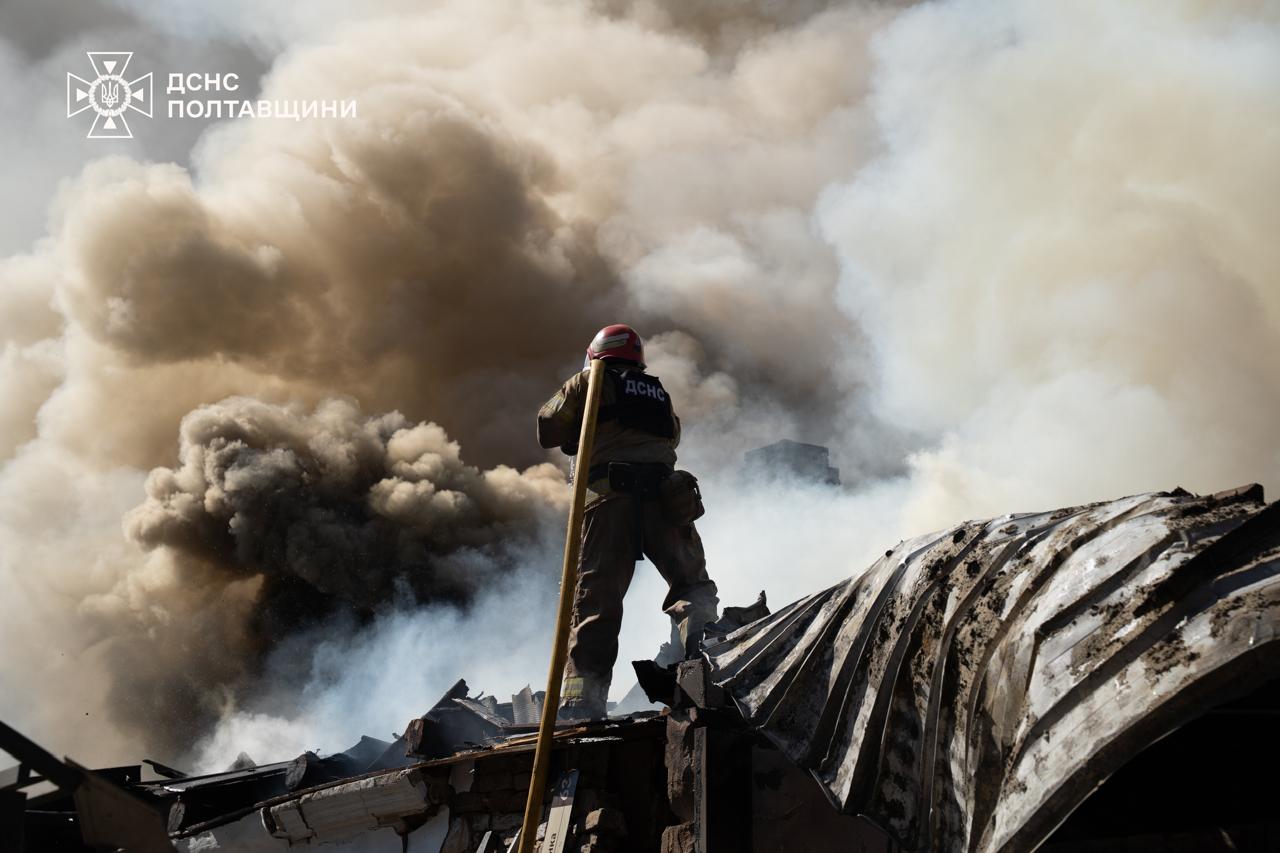

Editor's note: This item has been updated to include the statement from Ground Forces spokesperson Vitalii Sarantsev.
A Russian strike on Poltava, central Ukraine, killed two people and injured 47 others on the morning of July 3, local and military officials said.
The attack, which occurred around 9 a.m. local time, sparked fires and damaged civilian infrastructure, according to Governor Volodymyr Kohut and Ukraine's Ground Forces.
The State Emergency Service reported that 84 emergency workers, including psychologists, pyrotechnicians, and medics, were deployed at the site of the attacks. Firefighters extinguished the fires, cleared the rubble, and rescued 10 people from the damaged buildings.
According to the statement of Ukraine's Ground Forces, one of the strikes caused a fire at the Poltava conscription office, a local military facility. A separate strike near the Poltava conscription office set fire to a private residential property, authorities said.
Speaking on national television, Ukraine's Ground Forces spokesperson Vitalii Sarantsev said that Russia was deliberately targeting conscription offices to disrupt Ukraine's mobilization efforts.
"We will continue to strengthen our army, train our troops, and involve more people in defense to deliver a strong response to the enemy," Sarantsev said.
This wasn't the first time Russia has been linked to such attacks. Back in February, Moscow recruited the man who carried out a deadly bombing at a military enlistment office in the city of Rivne in northwestern Ukraine.
 The Kyiv IndependentKollen Post
The Kyiv IndependentKollen Post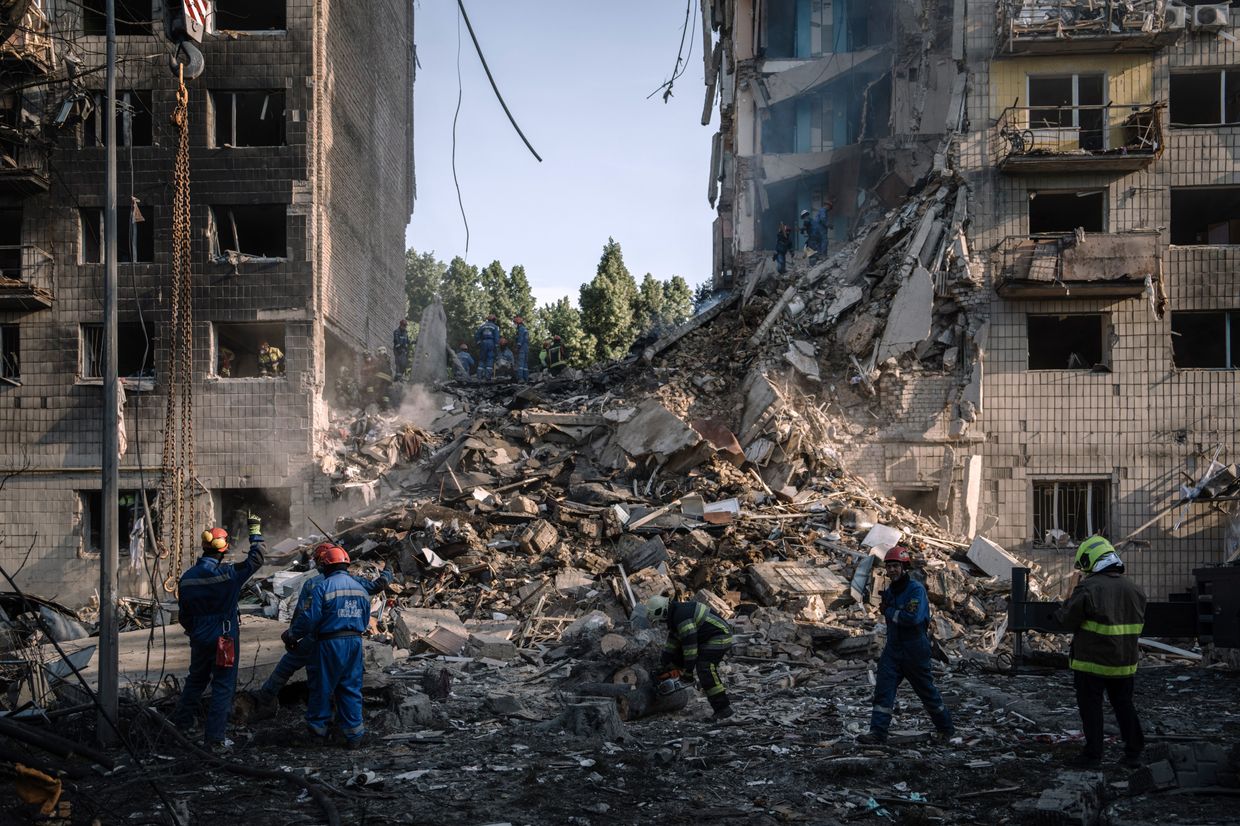
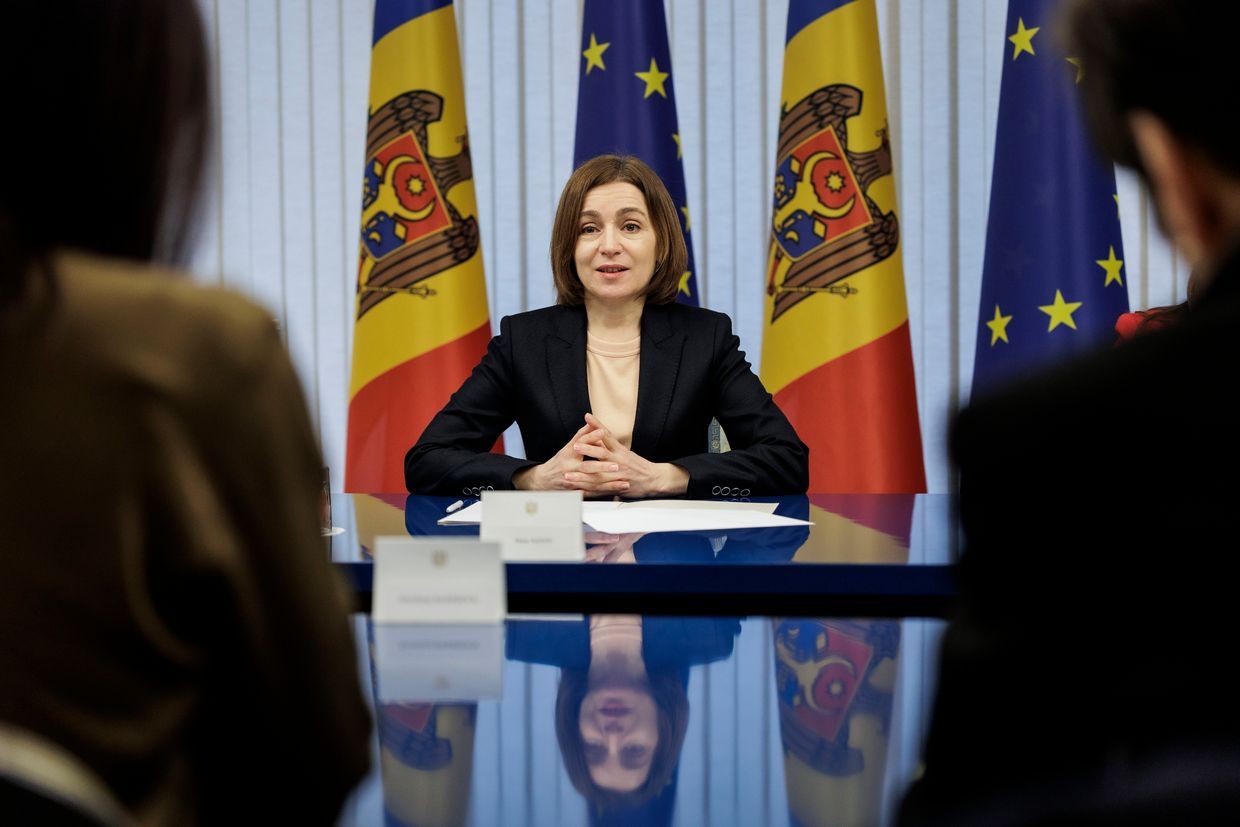

Moscow may instigate a crisis in Moldova's Russian-occupied Transnistria region to destabilize the country ahead of parliamentary elections scheduled for September, Moldovan President Maia Sandu said on June 12, according to Moldovan outlet Newsmaker.
"All these years, Russia has been using the residents of Transnistria and can provoke an even greater crisis at any moment if it suits its plans in Moldova," Sandu said.
"We can expect this crisis to deepen in the coming months, before the elections."
The president's comments come after Transnistria declared a 30-day state of emergency on June 11, due to a sharp reduction in natural gas supplies.
The unrecognized region, located along Moldova's eastern border with Ukraine, has faced mounting energy shortages since January, when Russian gas giant Gazprom halted deliveries.
Sandu, a pro-European leader of the country, warned that Moscow could combine voter bribery and political manipulation with "blackmail" in Transnistria.
"Russia may promise assistance in exchange for votes on the Right Bank. We can expect all sorts of games," the president said.
In February, Moldova's government revealed that Transnistria rejected a 60 million euros ($62 million) EU energy aid package under pressure from Moscow.
The Moldovan president assured that the country's institutions are monitoring the risks and pledged that the elections would be "free and fair," despite growing instability.
Sandu emphasized that Chisinau is prepared to support the population in Transnistria but must first address "the main problem — the withdrawal of Russian troops."
"This is a key issue that we must resolve peacefully, because otherwise we will not be able to justify our financial support," she said.
Moscow continues to maintain a military presence in Transnistria, which has been under the control of pro-Russian separatists since the early 1990s. President Volodymyr Zelensky said in February that around 1,000 to 1,500 Russian troops are currently stationed in the region.
Chisinau has repeatedly called for the peaceful reintegration of Transnistria and the withdrawal of Russian forces, citing it as essential to Moldova's security and development.
Moldovan Prime Minister Dorin Recean earlier told the Financial Times that Russia plans to send 10,000 troops to Transnistria and establish a pro-Kremlin government in Moldova.
 The Kyiv IndependentAnna Fratsyvir
The Kyiv IndependentAnna Fratsyvir